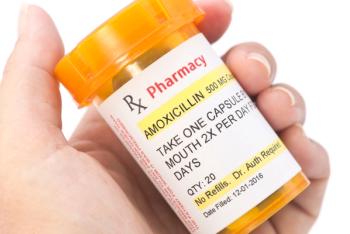
- Pharmaceutical Technology, JanuaryFebruary 2025
- Volume 49
- Issue 1
- Pages: 10–13
Expanding Pharma’s Horizons Through AI and Acquisitions
Application of AI/ML technology and a burst of M&A activity look to be shaping the future of the pharma industry.
During the course of the past 12 months, there have been numerous events that have impacted global industries. For example, some key moments from 2024 for the United States include the Democrats being voted out of the White House in favor of the Republican candidate, Donald Trump; the occurrence of several devastating weather events that wreaked havoc across multiple states; and the artificial intelligence (AI) boom riding the stock markets to new heights (1–3).
For the bio/pharma industry, in particular, stakeholders have experienced increased pressure on drug pricing and the cost of health care provision; huge therapeutic successes; less access to financing for smaller companies in the post-COVID era; greater digitalization; and an increased focus on advanced technologies, such as AI.
The year of AI in pharma
“Undoubtedly, 2024 was the year of AI in pharma, I think, and this manifested in several ways,” notes Ben Sidders, chief scientific officer for Biorelate, which is an AI platform company that provides data solutions to pharma companies. “Firstly, we had the rise of the AI-first companies that really started to dominate and be successful, and that’s driving a fundamental shift in the way drug discovery is undertaken. In addition, within traditional pharma, we’ve also seen the maturation of AI in applications like chemistry, pathology, and knowledge graphs for target discovery, which have really led the way and demonstrated tangible success and returns. And then, there’s also been the rise of real-world data and digital health more broadly, to really help in that more kind of clinical trial set up, design, and success.”
For Tore Bergsteiner, managing partner at MAIN5, a European consulting firm specializing in digitally enabled change for life sciences R&D organizations, “the accelerated adoption of AI/machine learning (ML) is reshaping drug discovery, clinical trial optimization, and personalized medicine. Implementing applied data ontologies, FAIR [findability, accessibility, interoperability, and reusability] data culture, and robust data governance across R&D, manufacturing, and distribution is essential to fully leverage AI and ML, and many larger pharma companies are recognizing and preparing for this reality now,” he specifies.
AI is proving to be a critical tool in R&D, especially for rare diseases and where a greater proportion of the appropriate patient cohort are being picked up through data analysis, agrees Michelle Bridenbaker, COO of Unbiased Science and vice-president of the Medical Information Leaders in Europe. Additionally, she highlights that the advances in AI are also enabling improvements within the communication space, which is allowing companies to augment their abilities to reach healthcare professionals and patients in a more efficient and comprehensible way.
While industry is embracing new technologies, such as AI and ML, it is doing so with open eyes and considering its purpose and design from a fundamental standpoint, emphasizes Alexander Seyf, CEO, Autolomous, a company that uses smart technology to help advanced therapy medicinal product manufacturers. “Right now, we are embracing ML and AI, generative AI, but also at the same time, we are questioning the fundamentals: Is it correctly designed? Is its intention right? What’s the architecture, kind of objective, behind what we are doing and what we want to do? And I think these considerations are fundamental,” he says.
AI and ML have been key talking points at conferences throughout 2024, owing to the potential benefits that may be achieved from their use in daily work tasks, adds Kate Coleman, vice president regulatory affairs, quality and compliance at Arriello, a life sciences consultancy. “But when it comes to implementing [AI] in bio/pharma, I think we’re still at the early days where we know the potential that it has,” she asserts.
“The regulators don’t fully know yet how they’re going to legislate or regulate for [AI]. There are disagreements in terms of how much or how little validation it needs, how much understanding, or how little understanding you need to implement [AI],” Coleman continues. While there is general consensus over the potential benefits of AI, it still won’t be a replacement for humans within the industry, she specifies. There will still be a need for people with good analytical techniques, and so, AI will more likely be used as a supportive tool, Coleman remarks.
Next steps for industry’s technology agenda
Moving into 2025, the technology agenda for the bio/pharma industry can be viewed in two dimensions, asserts Adam Sherlock, CEO at Qinecsa, an international pharmacovigilance technology and services solution provider. “The first is, what can AI, ML, robotic process automation, and digitization do for efficiency and productivity? As a service provider, we’re looking to use these technologies to be more productive, more efficient, faster, and [provide] higher quality in terms of what we do for our clients, but we’re also baking that into our own technology solutions that we are then selling to clients, and clients are using within their own businesses,” he states. “So, the efficiency agenda, and that, of course, drives towards not just better productivity, but also, lower cost.”
Secondly, Sherlock points out that industry will be figuring out the innovation that may be possible through the use of AI. “What innovative, new, generative output can be created by the industry using AI, whether that’s around truly novel therapies, the use of data to find different patient cohorts, and so on?”, he asks.
Managing and controlling the flow of information across various technical elements will be key for AI relevance to the bio/pharma industry moving forward, notes Miguel Forte, president of International Society for Cell & Gene Therapy, board member of Alliance for Regenerative Medicine, and CEO of Kiji Therapeutics. “For some technologies, it will be important to decentralize manufacturing, and for [this] we need two things: devices that are able to be deployed closer to the patients and information technology (IT) that is able to control those multiple devices,” he specifies. “[With] decentralized manufacturing, you continue to have a single product that needs to be consistently released and consistently have the same characteristics across those multiple devices, which requires flow of analytical data, flow of control in process, control data, and fine tuning that will require significant IT and adaptive IT, which is where AI comes in.”
Another element to consider is from the development standpoint where AI will impact process development, clinical design, and data analysis, Forte continues. “One interesting thing is digital twins, where we’ll be able to control what we do in real life with an alternative hypothesis,” he says. “From a clinical trial point of view, that could give us alternative controls, from the process development side, that could give us different scenarios that we can compare.”
The potential impact of AI in the physical world, into robotics for example, is a really exciting area to watch for, according to Edwin Stone, CEO, Cellular Origins—a company focused on enabling scalable, cost-effective, and efficient manufacture of cell and gene therapies. “One thing that I’m slightly nervous about is we don’t lose sight of [AI/ML’s] potential in this area,” he says. “If you look at other industries, such as robotics or automotive, the application of AI and ML to the physical world has been enormous already. I think in bio/pharma, we need to now make sure that we’re looking at things in the same way. The ability for ML to make manufacturing and robotics smarter, more capable, more able to automatically recover from errors.”
As there has been a lot of work with AI and ML in other industries already, it allows the bio/pharma industry the opportunity to apply that prior knowledge and implement these technological advances in a suitable way, Stone confirms. However, he notes, the regulators will need to be heavily involved.
“I think the regulators have demonstrated in recent years a real willingness to try and work with the industry to give them the benefits [of AI/ML],” Stone says. “So, making sure that we’re all coming together and having the right conversations is going to mean that we can [apply AI/ML effectively to industry] in the next two or three years, [rather than] five or 10 years.”
Some forums, such as The Organization for Professionals in Regulatory Affairs (TOPRA) and other industry groups, are already involved in discussions around AI and ML within regulatory operations and medical writing uses, asserts Preeya Beczek, director of Beczek Consulting, a specialist in regulatory affairs and compliance. “Industry is actively working on a handful of use cases that can help to avoid duplication and save time, allowing teams to focus on value added activities. For example, if you could automate the writing of big reports, that are a critical step in a [drug] submission, you can speed up your submission. If you could automate developing answers to Health Authority (HA) questions, based on previous questions and answers so that you’re not having to generate answers from scratch each time, that’s a real help. If you could automate and use AI to give you intelligence around what other companies are doing for a specific disease area, indications, previous HA outcomes and precedence, that’s going to save time for a regulatory lead or strategist,” she explains. “So, there’s so many use cases that apply to AI and ML that industry is probably a little bit inundated with what they can do, what they should adopt, and what they should avoid.”
“It’s also worth remembering AI thrives on scale,” Stone adds. “To work well it needs enormous amounts of data. In cell therapy we are still limited in our access to data. We need connected processing that can centralize these data so that we can access the benefits that ML and AI can bring.”
AI will continue to rise in prominence moving into 2025, driven by investment in three key areas: data, models, and culture, according to Sidders. “As traditional pharma is becoming more mature in its use of AI, it will begin to look to outside platform companies that might support the internal capability, build for AI in drug discovery,” he says. “So, I expect we’ll probably see a picking up of pharma acquisitions of technology platforms that will drive pharma companies’ internal science.”
Expected increase in M&A
Over the past year or two, while the bio/pharma industry has seen a lower volume of M&A, it did see some high-value deals and a flurry of activity toward the end of 2024. Key to this trend has been the post-COVID-19 financial dip, where early-stage platform programs became very difficult to finance, stresses Erik Wiklund, CEO of Circio, a biotechnology company developing a novel circular RNA vector platform.
“There is still quite a lot of capital being deployed, but in fewer and larger fundraises, which is linked back to this derisking by the investors,” Wiklund says. “[Investors are] not interested in funding a company for only the next 12 to 18 months; they appear to prefer bigger asset-centric rounds that see a company through to clinical proof-of-concept data. So, then you end up with a few mega-rounds focusing on more mature programs, and limited funds left for everyone else. Therefore, you see very few smaller deals and seed-stage and platform companies suffer. And, I think, that’s a very clear trend that that looks like it will continue for the foreseeable future.”
For several Big Pharma companies, patent cliffs are looming whereby they will need to plug on assets that will generate revenue in either the short- to mid-term, which may lead to larger and later-stage licensing deals in the near future, Wiklund emphasizes. However, for early-stage companies, both fundraising and partnering in such an environment becomes more difficult and forces a prioritization of asset generation versus platform development and expansion, which may hold back scientific development, he adds.
“There’s more recognition of the patent cliffs that are coming in the next couple of years, and companies seem to be really consolidating their costs,” continues Coleman. “So, I think there’s about 169 drugs that are going to be off patent by 2030, so you’re even seeing the very large pharmaceutical companies really trying to take a step back and see how they’re going to organize themselves for growth in the future.”
The year ahead, or possibly just beyond, will be an interesting period in terms of M&A activity, according to Will Gordon, senior vice-president of product management at ArisGlobal, a life sciences technology company specializing in pharmacovigilance, regulatory and quality. Looking across the sector, he points to a large revenue “bump” currently for developers of glucagon-like peptide 1 (GLP-1) drugs. These medications, which help treat type 2 diabetes and support weight loss, have seen a lot of publicity in recent months and are selling quickly, generating a healthy income. Although some of this will be absorbed in addressing supply chain issues, once that has been achieved these companies will start to look at where they can spend that money, Gordon suggests.
“Sometimes [companies] like to stockpile [revenue]. Sure they may use it to fund new internal initiatives, perhaps return some of it to investors in the form of dividends, but once that cash stockpile reaches a certain point, they’re going to want to do something with it,” Gordon comments. “I predict we will see a number of proposed acquisitions or mergers in the near future.”
Another consideration for the recent M&A activity and how it may progress is interest rates, which were pretty high in 2024, comments Mike Baird, director of Product Management at Schlafender Hase, a provider of automated proof-reading software for life sciences. “There is a bit of speculation going forward,” he remarks. “Obviously, a change of administration, new people, new ideas, but interest rates are coming down, and as far as I know, predicted to continue coming down. So, obviously that is a boost to [M&A].”
A new administration
The Presidential elections have been widely discussed and publicized by global media outlets, but in terms of how the shifting political landscape in the US may impact the bio/pharma industry, it is a complex and difficult-to-predict scenario, emphasizes Forte. However, there are a few aspects to consider, such as the more conservative attitude to business that is expected with a Republican-led government, which will probably have a positive impact on the economy and could give confidence within the investment space, he specifies.
“If you take the market view on [the political situation], then the general sentiment is positive for industry with a switch to the new Trump Republican administration. People expect lower taxes. People expect deregulation. It’ll be easier to do business in the US, and that tends to drive a positive sentiment in the stock market. So, I think that’s good news for the industry in general,” Wiklund adds. From a pricing perspective, however, there may be more challenges for industry, particularly as Trump was vocal about this issue during his previous term in office, Sherlock states. “The debate about the cost of health care is something that I see getting louder and louder within the US,” he says.
“Going back to the technology side of things, one thing that I’m not certain of, but I think might be a good prediction, is that there’ll be a relaxation in the regulations surrounding AI,” asserts Baird. “I think this administration is a big supporter of technology, which is great, but also a big supporter of AI, and where that can take us, and what that can do for the for the industry.”
However, while the new administration is critical of cumbersome regulation, it would be highly risky to downplay controls that safeguard patients’ health, notes Gordon. “Yes, it’s true that regulation change in this industry happens at a glacial pace: it can take years, sometimes decades, before that actual change is put into place,” he says. “But if you remove that, what does that do to the industry? On the one hand, it creates an opportunity for quick movers. But given that it is human health at stake here, what guarantees are there that these new innovators are going to play by the same rules as the large corporations? What happens if they don’t?” The risk is that the whole dynamic could change, and not necessarily for the better, Gordon suggests.
References
- CNN Politics. Election 2024: Presidential Results. CNN.com/election/2024 (accessed Dec. 18, 2024).
- Foerster, J. The Most Significant U.S. Weather Events of 2024. Forbes, Dec. 17, 2024.
- Cimino, A. History Says the Nasdaq Will Soar in 2025. Here’s the 1 AI Stock to Buy Before It Does. The Motley Fool, Dec. 15, 2024.
About the author
Felicity Thomas is associate editorial director of Pharmaceutical Technology®, Pharmaceutical Technology EuropeTM, and BioPharm International®.
Article details
Pharmaceutical Technology®
Vol. 49, No. 1
January/February 2025
Pages: 10–13
Citation
When referring to this article, please cite it as Thomas, F. Expanding Pharma’s Horizons Through AI and Acquisitions. Pharmaceutical Technology 2025 49 (1).
Articles in this issue
10 months ago
Split Opinions on Training Strategies10 months ago
Next-Generation Anti-Obesity Medicines10 months ago
Evolving Approaches to Taste Masking10 months ago
Overcoming Biosimilar Scaling Challenges11 months ago
Steps to Process Development Optimization11 months ago
Advancing ADCs to the Next Level11 months ago
Introducing a New Legal Framework, Fees, and Charges11 months ago
The Social Media CodeNewsletter
Get the essential updates shaping the future of pharma manufacturing and compliance—subscribe today to Pharmaceutical Technology and never miss a breakthrough.




